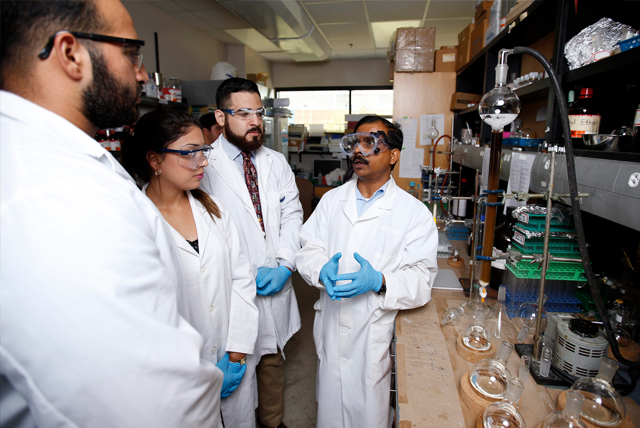Document Type
Article
Publication Date
9-1-2018
Abstract
Fiber-type dye sensitized solar cells that are non-metallic, flexible, and thread-like in structure have many potential military and functional textile applications. With the use of quantum dots (QD), exciton transfer facilitators (Phenyl-C61-butyric acid methyl ester-PCBM) and Poly(3-hexylthiophene-2,5-diyl-P3HT), and careful preparation of the TiO2 oxide layer deposited on the carbon fiber working electrode, an optimized efficiency of 7.6% was obtained. Carbon nanotube yarn (CNTY) was used to prepare both the working and counter electrodes of the fabricated cells. TiCl4 annealing of the TiO2 layer was carried out and the resulting oxide layer morphology was found to be very uniform. The quantum dots, cadmium sulfide (CdS) and cadmium selenide (CdSe), were deposited directly onto the surface of the nanoporous oxide layer using chemical bath deposition (CBD). Also, the P3HT and PCBM were applied and deposited via CBD on the working electrode as a bulk heterojunction material. Potentiometric characterization of the prepared cells performed at different cell lengths and showed that the maximum efficiency was obtained for cells approximately 3.5 cm in length. Photovoltaic performance of these solid state three dimensional cells was also carried out for different cell configurations.
Recommended Citation
Grissom, Glenn, et al. "Three-dimensional carbon nanotube yarn based solid state solar cells with multiple sensitizers exhibit high energy conversion efficiency." Solar Energy 171 (2018): 16-22. https://doi.org/10.1016/j.solener.2018.06.053
Publication Title
Solar Energy
DOI
10.1016/j.solener.2018.06.053




Comments
© 2018 published by Elsevier. This manuscript is made available under the Elsevier user license https://www.elsevier.com/open-access/userlicense/1.0/